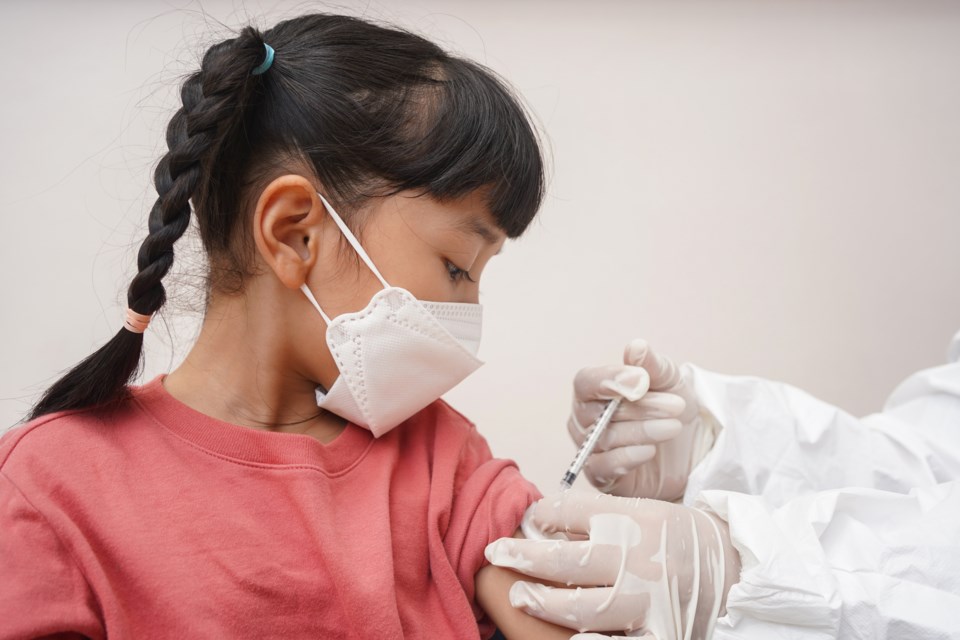I am all for vaccinating children when the medical evidence supports such a measure.
However, to subject more than one million B.C. young people to a vaccine based purely on speculation regarding the possibility of something called long COVID is problematic.
I read with interest the article by Julie MacLellan [“Opinion: So B.C. children are at risk from COVID-19. Now what?” published on squamishchief.com on Nov. 18.]
None of the articles she cited added up to the dire prediction that children are at risk. In fact, rather than agree with MacLellan’s alarming assessment of the situation, I agree with the B.C. government that “elevated case rates in children have not translated into increased hospitalizations”.
The government is using relevant data to come to the decisions they are making when addressing the risk COVID poses to children in B.C.
No school-aged child has died due to COVID, despite the large number of cases.
The two infants MacLellan referred to who tragically died were already in hospital for other issues and unfortunately contracted COVID while in hospital.
This is truly terrible but is not proof that COVID is a global threat to all children.
The cited by MacLellan is far from the smoking gun she claims it is. Among the many problems is that there was no control group. The researchers called parents of the children months after the COVID event and asked a series of questions.
The opinion piece by is exactly that, an opinion. For example, Dr. Smart predicts that “this fourth wave of COVID-19 will be the result of misinformation, under-vaccination and premature abandonment of public health mitigation strategies.” I am not sure how she knows this. Perhaps she can see into the future. Move along.
As for the link to the stating long COVID affecting one in seven children, it is based on one study. The study compared symptoms in COVID-positive CYP (children and young persons) with people who tested negative. Both groups reported COVID symptoms at 15 weeks, with those testing positive for COVID reporting slightly more symptoms than those who tested negative.
However, the authors say, ‘As in any self-selected online study, we need to acknowledge our response rate of 13.5%. It is possible that there is a response bias, for example, toward those continuing to experience symptoms at three months being more motivated to participate, resulting in an over-representation of symptom prevalence.’
An interesting finding of the study was this: “Strikingly, while 40.8% of positives felt worried, sad or unhappy on the single item of the EQ-5D-Y, 39.2% of the negatives also reported feeling this way.”
Perhaps it is not the virus causing the mental health issues but rather government and societal response to the virus.
I clicked the link in the article to the study claiming diabetes can be caused by COVID. The article was written by ‘anonymous’. I kid you not. I did not bother reading it.
The analogy about the shark attacks was both spot on but also so false. Shark attacks, like children dying of COVID are rare but newsworthy events. However, lining up 100 kids on the beach and saying 10 or 12 of them are going to be eaten by sharks is so far off base.
According to the B.C. CDC, there are about one million people under the age of 19 in B.C.. That means 0.0002% of them have died of COVID, not 12%. That means 0.0024% have wound up in the ICU in the past 20 months, not 12%. Numbers are important.
Spelling it out, no matter how slowly, still does not make it so. Perhaps MacLellan could have provided some relevant data (ie data from BC or at least Canada) or statistics to back up her claim that COVID presents a serious threat to children.
There is lots of debate in the scientific community regarding long COVID and children. Very few studies with control groups have been conducted, but here is one out of Germany which states:
There was no statistical difference comparing the reported symptoms between seropositive students and seronegative students. Whether the infection was known or unknown to the participant did not influence the prevalence of symptoms.
The current situation in B.C. is that children are not at risk. The B.C. government has looked at the data and come to the appropriate conclusion.
However, I do share MacLellan’s question as to why, after months of saying kids are not at risk, there is a push to get all of those little ones vaccinated.
Martin Fichtl
Brackendale




